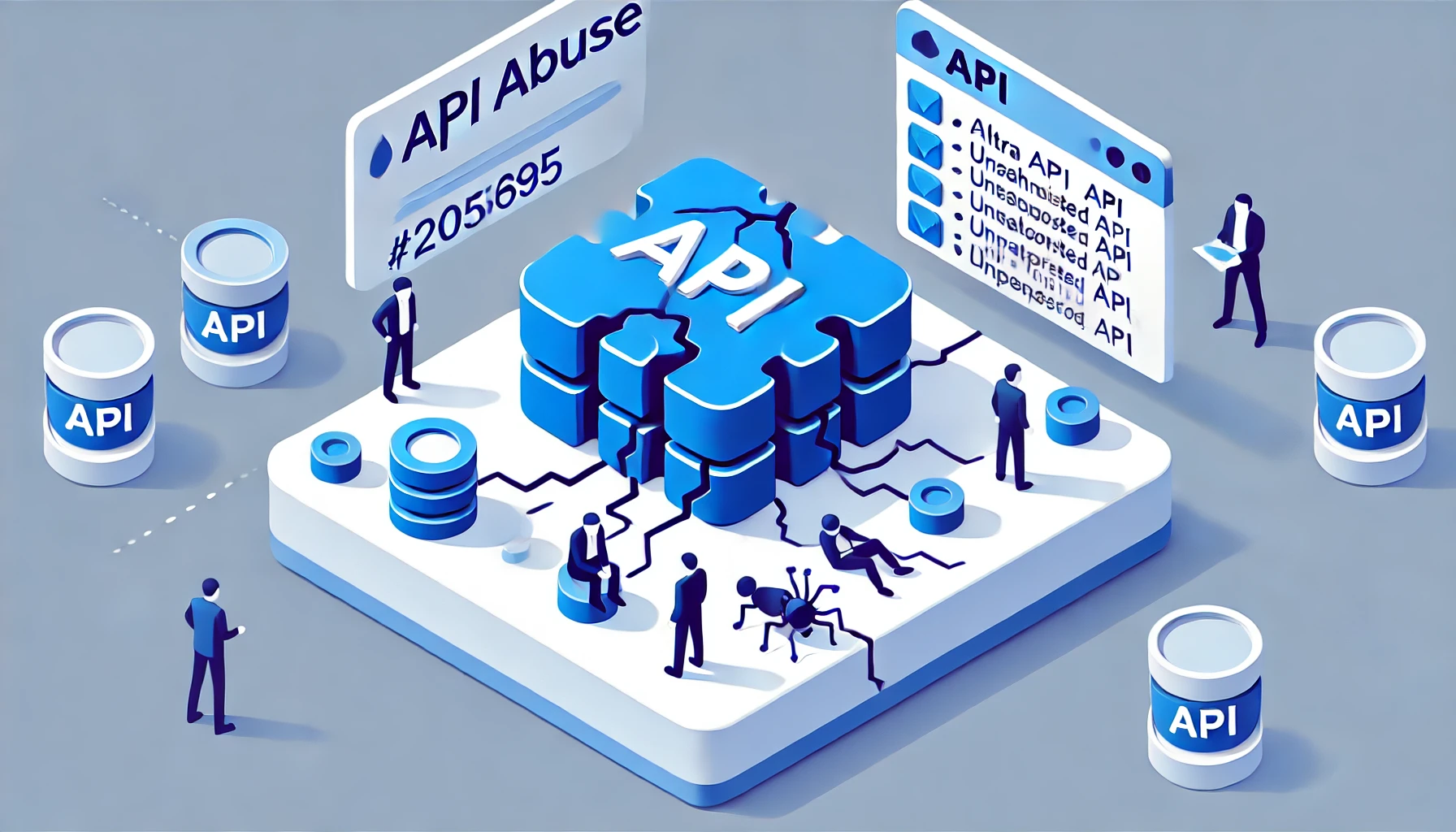
API Abuse
API Abuse: How to Identify and Protect Against Emerging Threats
Executive summary
API abuse is a growing threat that can lead to data breaches, service disruptions, and compromised business integrity. It occurs when attackers misuse APIs in unintended ways, such as data scraping, credential stuffing, and exploiting business logic flaws. Real-world incidents like Facebook’s data scraping leak and Tesla’s billing exploit highlight the severe impact of such attacks. To combat API abuse, organizations must implement strong security measures, including rate limiting, authentication, monitoring, and regular audits. Codesealer offers advanced solutions to protect your APIs from these threats, ensuring secure and resilient digital operations.
APIs have become the backbone of modern digital ecosystems, enabling seamless interaction between various services, platforms, and applications. They drive innovation, streamline processes, and enhance user experiences. However, the openness and accessibility that make APIs so valuable also make them susceptible to misuse. This is where the concept of API abuse comes into play.
What is API Abuse?
API abuse happens when someone leverages an API in ways that the developers never intended, often bypassing security controls or exploiting business logic flaws. Unlike traditional hacking attempts that aim to breach security measures, API abuse frequently involves using the API as it was designed but with malicious intent. This can lead to severe consequences, including data breaches, service disruptions, and damage to business integrity.
Common Forms of API Abuse
One of the most common forms of API abuse is data scraping, where automated scripts extract large volumes of data, often violating terms of service or intellectual property rights. Another prevalent method is credential stuffing, where attackers use stolen usernames and passwords to gain unauthorized access to user accounts. There are also more disruptive forms, such as denial of service (DoS) attacks that overwhelm an API with excessive requests, rendering it inaccessible to legitimate users. Even more subtle forms of abuse include manipulating rate limits to access data faster than permitted or exploiting business logic flaws to gain benefits that were never intended.
Real-World Examples of API Abuse
Facebook’s Data Scraping Incident
In 2018, Facebook experienced a data scraping incident where attackers exploited vulnerabilities in the social network’s search and account recovery APIs. They were able to collect personal information from over 500 million user profiles, including phone numbers and email addresses, which were later leaked online. This incident revealed a major flaw in Facebook’s API security—insufficient rate limiting and inadequate access controls allowed attackers to automate their scraping activities without triggering any alarms.
Tesla’s Free Supercharging Exploit
A security researcher discovered a flaw in Tesla’s API that allowed him to manipulate billing information, enabling unlimited free supercharging. By exploiting a business logic flaw, he bypassed the intended billing process, revealing how even sophisticated systems can fall victim to abuse if their APIs are not thoroughly tested and secured. Tesla quickly patched the vulnerability, but the incident underscored the need for regular audits and robust validation of all API functions.
Twitter’s API Rate Limit Bypass
Twitter faced a notable API abuse case in 2019 when researchers found a way to bypass rate limits, allowing them to send more requests than the API permitted. While this might seem like a minor issue, it could have been used to scrape user data or flood the platform with automated content, violating Twitter’s policies and potentially disrupting the service.
How to Protect Your APIs from Abuse
Defending against API abuse requires a proactive and comprehensive approach. It’s not enough to simply put technical controls in place; businesses must also understand how their APIs could be misused and take steps to prevent such scenarios. Implementing rate limiting and throttling can help control the number of requests made in a short period, but this needs to be complemented by strong authentication and authorization mechanisms. Ensuring that only authorized users can access your API is crucial, and using OAuth, API keys, or JSON Web Tokens (JWT) can provide an additional layer of security.
Beyond these measures, it’s essential to monitor API usage patterns for signs of abuse. Unusual activity, such as a sudden spike in requests or irregular data access patterns, can indicate that someone is trying to misuse your API. Automated tools can help detect these anomalies in real-time, enabling you to respond quickly before any significant damage is done.
Securing business logic is another critical aspect. APIs should enforce business rules consistently and validate all user inputs to prevent exploitation. For example, if your API allows users to apply discount codes, ensure that these codes cannot be manipulated to grant unintended benefits. Regularly testing your APIs for such logic flaws can help identify and fix vulnerabilities before they can be abused.
Encryption also plays a key role in protecting sensitive data. All API traffic should be transmitted over HTTPS to prevent eavesdropping, and sensitive data stored within your systems should be encrypted to protect it in case of a breach. Additionally, deploying Web Application Firewalls (WAFs) and API gateways can filter malicious traffic and enforce security policies, providing an extra layer of defense against common attack vectors.
The threat landscape is constantly evolving, and so should your API security measures. Regularly reviewing and updating your security policies is essential to stay ahead of potential threats. Educating your development team about the latest API security best practices and conducting frequent security audits can help identify and mitigate vulnerabilities before they are exploited.
Conclusion
API abuse is a growing concern that can have serious consequences for businesses. Whether it’s data scraping, credential stuffing, or exploiting business logic flaws, attackers are finding new ways to misuse APIs. By understanding these threats and implementing comprehensive security strategies, you can protect your APIs from abuse and ensure that they continue to support your business securely.
Are your APIs protected against abuse? Codesealer offers advanced solutions to safeguard your APIs from exploitation and ensure your digital assets are secure. Get in touch to learn how we can help fortify your APIs against the latest threats.
